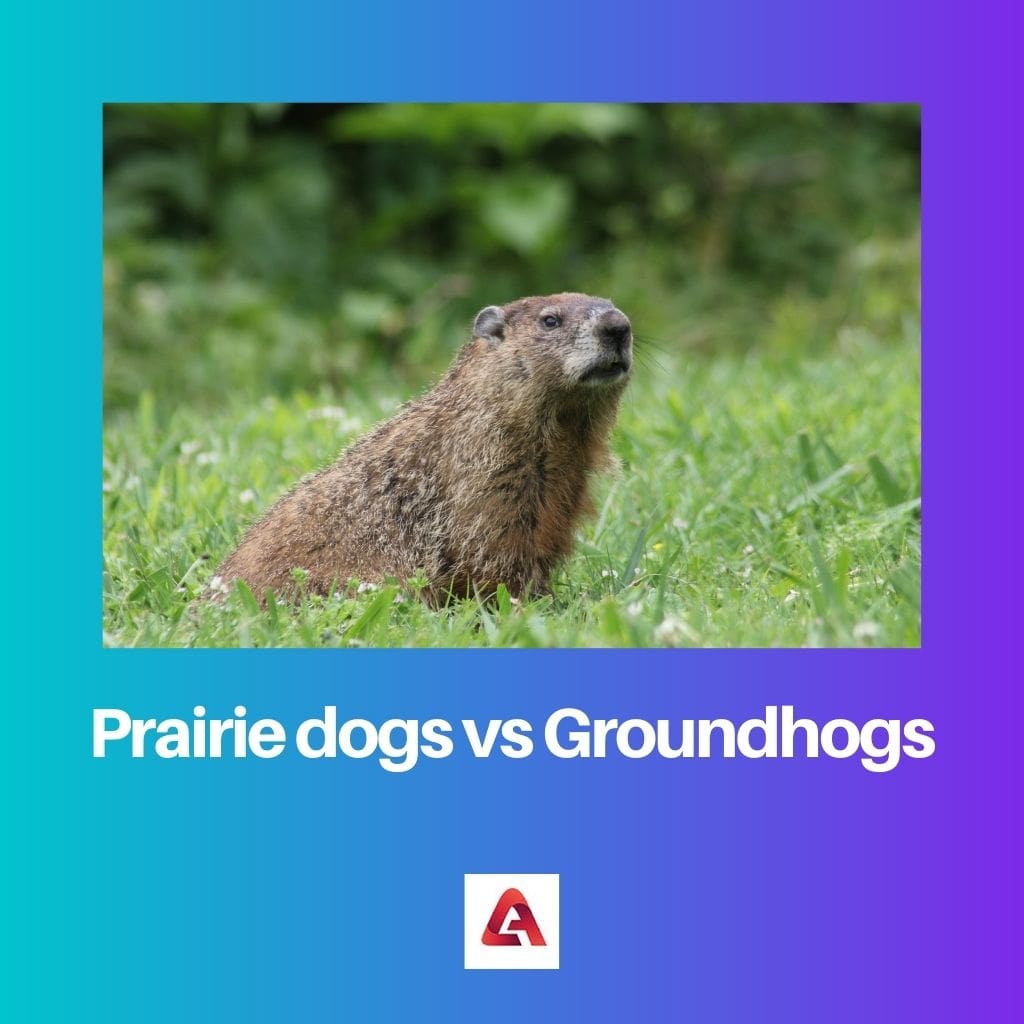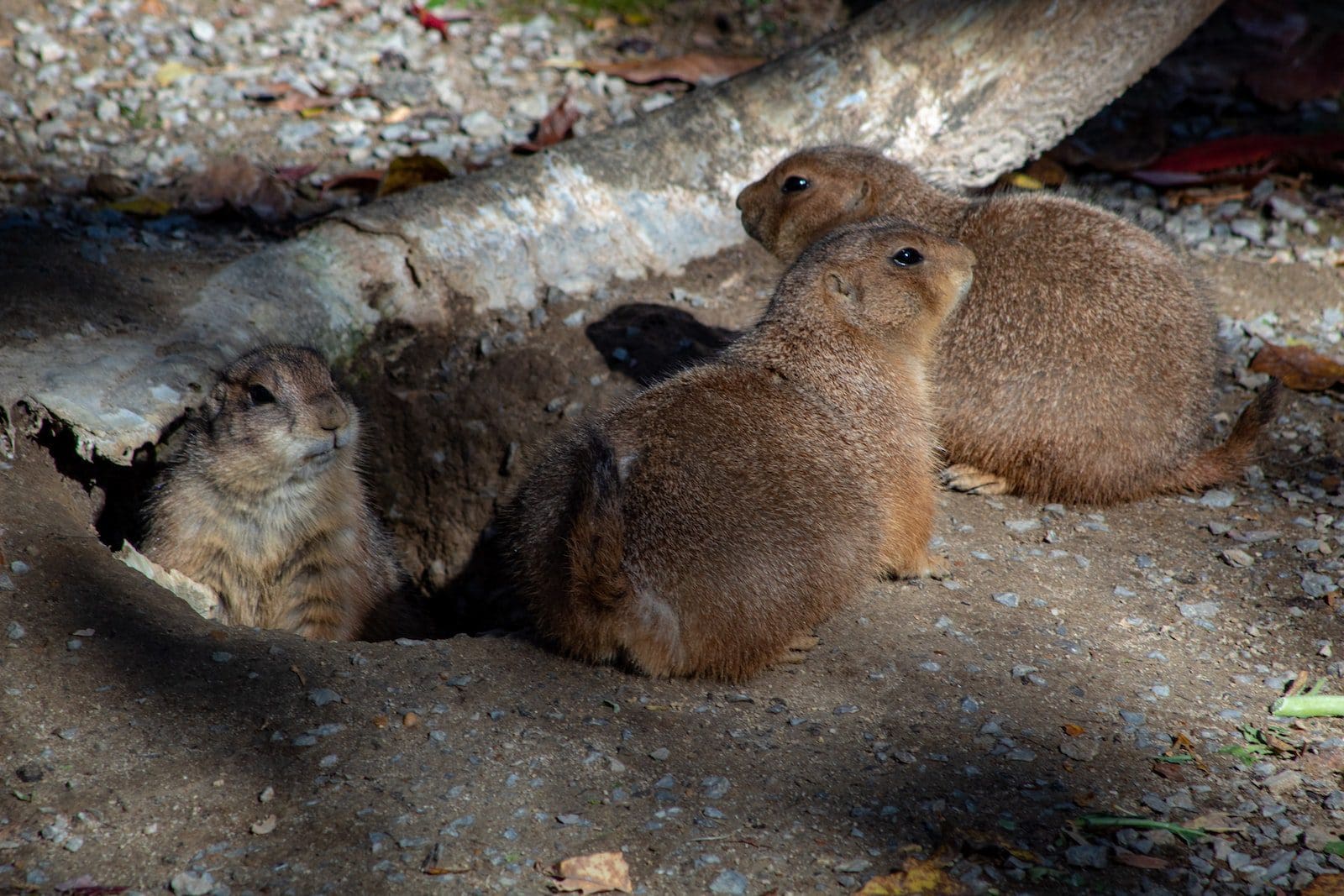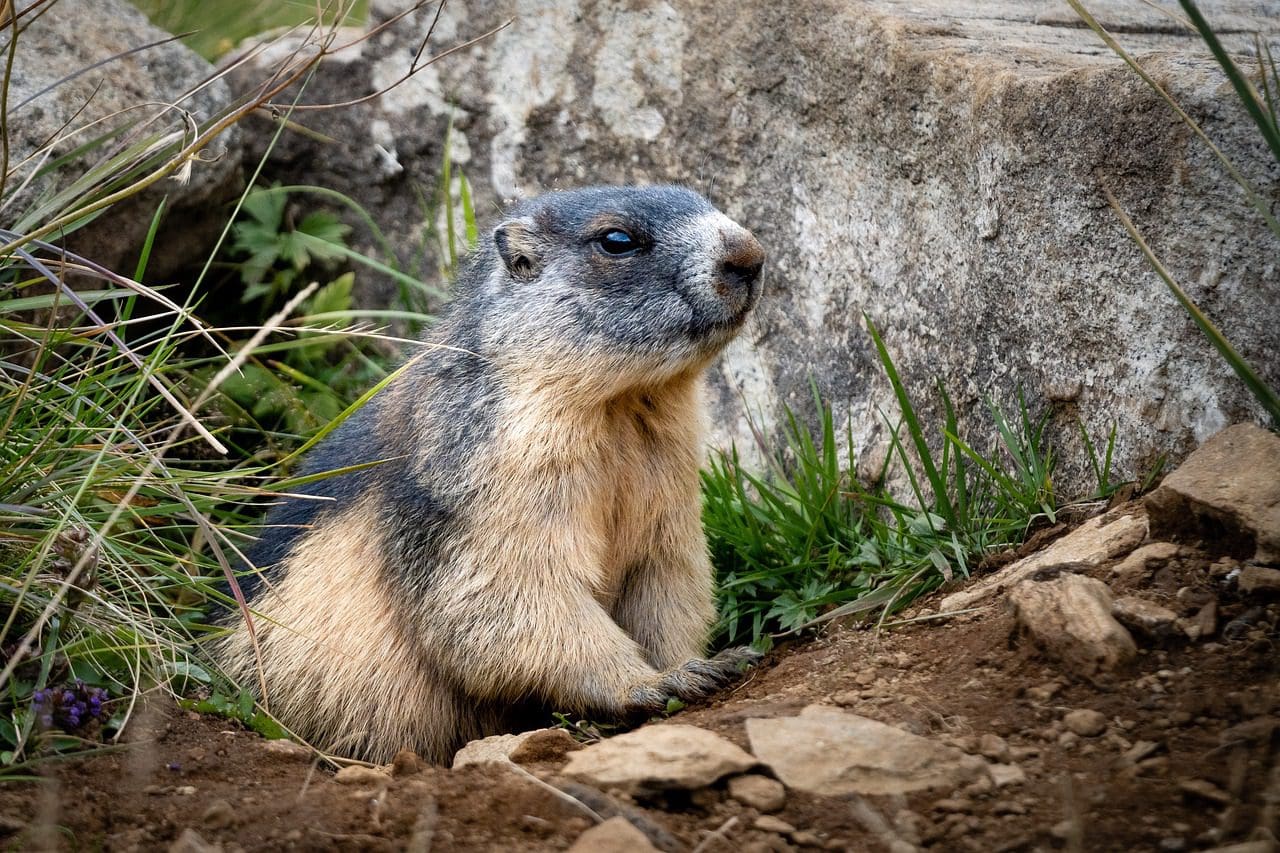What could be more confusing than having a rodent named Dog? Well, maybe another rodent species looks very much like the previously mentioned rodent.
Unknown to many, the prairie dog is a rodent species and belongs to the same class as groundhogs. It can become quite a task when one tries to differentiate between them since both are burrowers and hibernate in the winter.
Key Takeaways
- Prairie dogs inhabit grasslands and form complex social structures; groundhogs prefer forests and meadows and burrow alone.
- Prairie dogs have small, thin bodies with short tails; groundhogs have larger, stockier bodies with bushy tails.
- Prairie dogs communicate using a range of calls and vocalizations; groundhogs are mostly solitary and use fewer vocalizations.
Prairie Dogs vs. Groundhogs
Prairie dogs are burrowing rodents that live in large colonies in the grasslands of North America. They are social animals that communicate with each other through a variety of vocalizations and behaviors. Groundhogs are solitary animals that live in underground burrows and hibernate during winter.

Prairie dogs are herbivore rodents that live in communal burrows connected through tunnels. They belong to the Cynomys genus and are a type of ground squirrel commonly found in the grasslands of North America.
They got their name because their calls sounded similar to a dog’s bark.
Groundhogs are another type of herbivore rodent species belonging to the M. monax species. They are strong diggers. They have sharp and curved claws for the very purpose.
They are also called woodchucks and are found throughout North America.
Comparison Table
| Parameters of Comparison | Prairie dogs | Groundhogs |
|---|---|---|
| Size | Small in size | Large when compared to prairie dogs |
| Characteristic | They live in groups as a community or a family | They prefer to live isolated from the rest |
| Forming burrows | They dig a deep burrow for themselves and are not connected to other caves. | They dig a deep burrow for themselves and are not connected to other burrows. |
| Natural habitats | They are found in most temperate lands | They are found in all of North America |
| Calls | They have distinct whistle calls that change the message they want to communicate | They have shrill whistle call |
| Hibernation | They are facultative torpor | They are true hibernators |
What are Prairie dogs?
Prairie dogs are a type of herbivore rodent found in the temperate grasslands of North America. There are mainly five species of prairie dogs: black-tailed, white-tailed, Mexican prairie dogs, Gunnison’s, Utah.
Among these species, black-tailed is the most common one. Prairies live in the form of families in one burrow.
Their small group includes one male, one female, and their little kids, much like humans living in nuclear families who groom each other and work together to protect their shelter. They do not hibernate groundhogs but regulate their body temperature in a manner called facultative torpor.
Since they are not true hibernators, prairie dogs can be seen outside during warm winter days to get food like grass, seeds, etc. The calls of a prairie dog are distinct calls that sound like whistles.
They commonly use these to communicate about possible predators or mark their territory. Depending on what they are conveying, the tone and pitch of the whistle change.

What is Groundhogs?
Groundhogs are rodents belonging to the M. monax species as strong diggers. They are mainly herbivores but can feed on small insects and worms if necessary.
They gain weight during the start of winter for hibernation. They are true hibernators who regulate their body temperature, lower their heartbeats, and reduce their oxygen intake.
Scientists have been studying their behavior during hibernation to understand the concept better. In general, they have a lifespan of 14 years without any threats being included, but if they are open to wildlife, they are seen to only have an average of 2-6 years because of their predators.
They form nearly 14-15 ft deep caves, but on being threatened by predators, they can also climb up high trees to hide themselves. Their usual predators include coyotes, foxes, etc.

Main Differences Between Prairie Dogs and Groundhogs
- Prairie dogs, as compared to groundhogs, who are 16-19 inches, are very small, with only a maximum length of 12-15 inches in the case of an adult. The adult prairies are said to be even smaller than rabbits.
- Groundhogs live in solitary. They do not live in communities or groups. Prairie dogs, on the other hand, live in groups called communities or families. They stay with a male, a female, and their little ones in one burrow.
- Prairie dogs dig burrows and connect them through tunnels to other burrows of their family as they live in a group. Since groundhogs like to live in solace, they dig deep burrows away from everyone else and do not form tunnels.
- The prairie dogs are not true hibernators because they do not live in areas with harsh winter conditions. They tend to habitat in temperate lands. At the same time, groundhogs are found throughout North America.
- Groundhogs have a shriek whistle call to alert other nearby groundhogs of possible prey being close by. At the same time, prairie dogs have a distinct call that sounds like a whistle and changes with the message they want to communicate to other prairies.
- Prairie dogs only tend to lower their regulate their body temperature, and this is called facultative torpor. But groundhogs are true hibernators and show all the characteristics of one.




